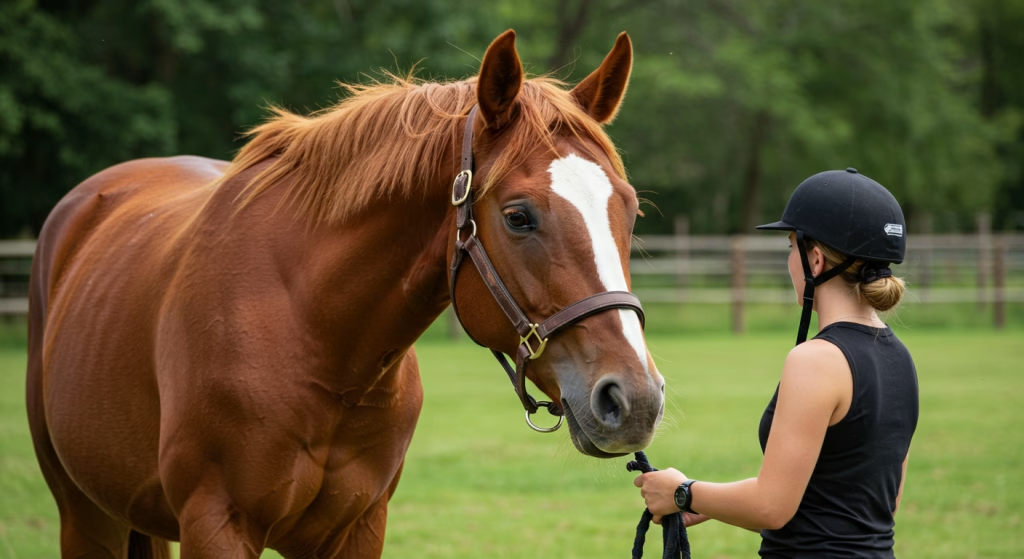Horses are highly expressive animals with a rich, nonverbal communication system. Unlike humans, horses don’t use words to convey their emotions, intentions, or needs—they use body language. For those who spend time around horses, understanding their signals is essential for safety, training, bonding, and overall well-being. Whether you’re a horse owner, rider, trainer, or enthusiast, learning to interpret equine body language can dramatically improve your relationship with these sensitive and intelligent creatures.
Thank you for reading this post, don't forget to subscribe!In this article, we will explore the fundamentals of equine body language—what to look for, what it means, and how you can respond appropriately.

1. Why Equine Body Language Matters
Horses are Prey Animals
To understand how and why horses communicate the way they do, it’s important to remember that horses are prey animals. Their survival depends on being alert, responsive, and attuned to their surroundings. As a result, they have developed a nuanced system of communication to interact with both herd members and potential threats.
Horses Are Always “Speaking”
Even when a horse is standing quietly, it is still communicating. Its ears, eyes, tail, posture, breathing, and movement all send out information. For humans who work with horses, the ability to interpret these cues accurately can mean the difference between a smooth ride and a dangerous encounter.
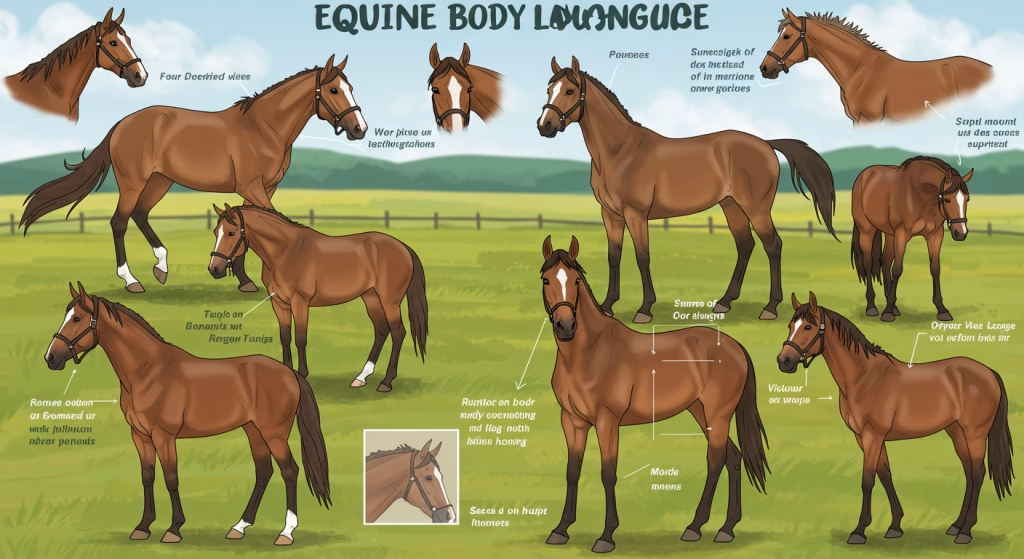
2. The Role of Herd Dynamics
In the wild, horses live in herds led by a dominant mare or stallion. Within this social structure, horses use body language to:
- Establish hierarchy
- Maintain harmony
- Warn or discipline
- Show affection or submission
Domestic horses retain these instincts, and they will communicate with humans in similar ways they would with other horses. Understanding this behavior allows us to work with, rather than against, their natural instincts.

3. Reading Equine Expressions: Key Body Parts to Watch
A. Ears
Ears are among the most expressive parts of a horse’s body. They move independently and constantly scan the environment.
- Ears forward: Alert, curious, paying attention to something in front.
- Ears flicking back and forth: Listening to multiple things, possibly anxious or uncertain.
- Ears pinned flat back: Anger, aggression, warning to back off.
- Ears relaxed to the side: Calm, resting, possibly sleepy.
B. Eyes
Horse eyes are large and expressive. They can convey fear, relaxation, tension, or curiosity.
- Soft eyes: Relaxed, trusting, comfortable.
- Wide eyes with visible whites: Fear, surprise, or alarm.
- Blinking: Processing information, relaxed thinking.
- Hard, narrow eyes: Tension, discomfort, potential aggression.
C. Mouth and Lips
The mouth also offers subtle clues to a horse’s state of mind.
- Tight mouth or clenched jaw: Tension or discomfort.
- Chewing or licking lips (without food): Processing, calming signal, sometimes submission.
- Yawning: Could mean relaxation or an attempt to release stress.
D. Head and Neck Position
Head position reveals both mood and physical comfort.
- High head carriage: Alert, nervous, or excited.
- Low, relaxed head: Calm, at ease, trusting.
- Tossing head: Frustration or irritation (often at flies or discomfort from tack).
- Extended neck with ears forward: Curiosity, interest.
E. Tail
The tail is a key part of equine body language, often used to express emotion or irritation.
- Relaxed and swinging naturally: Calm and content.
- Clamped tightly against body: Fear or tension.
- Swishing rapidly: Annoyance or agitation.
- Raised tail: Excitement, sometimes fear or playfulness (especially in foals).
F. Legs and Hooves
The positioning and movement of a horse’s legs can indicate intent or emotional state.
- Resting a hind leg: Relaxed (note: this differs from lameness).
- Pawing the ground: Impatience, boredom, or frustration.
- Stomping: Irritation, often at flies but also sometimes at humans or other horses.
- Kicking or threatening to kick: Aggression, fear, or a warning.
- Striking with front legs: Aggressive or defensive behavior.
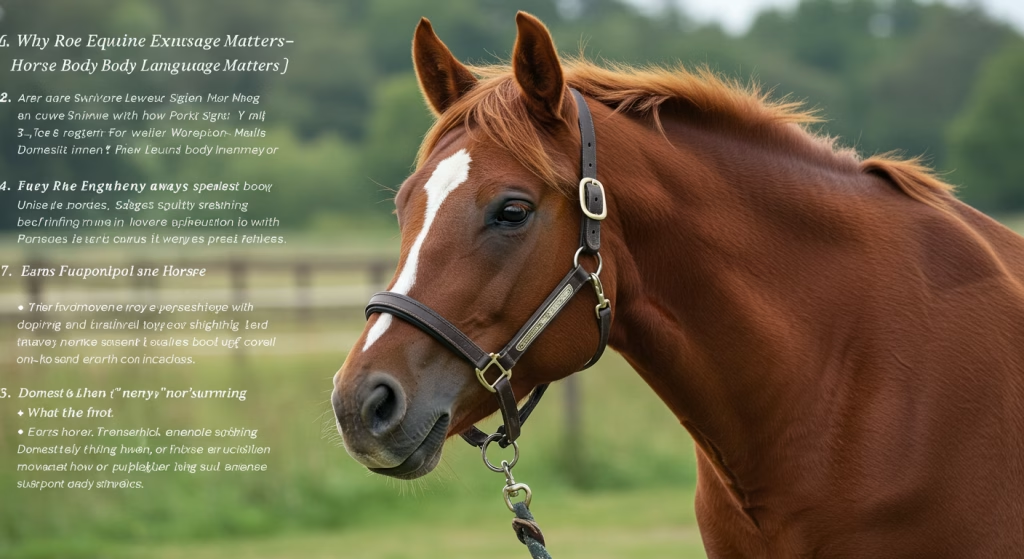
4. Common Equine Behaviors and What They Mean
A. Nudging
- Friendly nudge: Seeking attention or affection.
- Forceful nudge: Asserting dominance or impatience.
B. Snorting and Blowing
- Quick snort: Alertness or mild alarm.
- Blowing (forceful exhale): Clearing nostrils or expressing tension.
- Soft blowing: Relaxation or interest.
C. Rolling
- Healthy horses roll to scratch and coat themselves in dirt.
- Excessive rolling, especially after eating, could signal colic—a medical emergency.
D. Pacing or Circling
- Indicates stress, boredom, or anxiety.
- May occur in confined horses without enough exercise or stimulation.
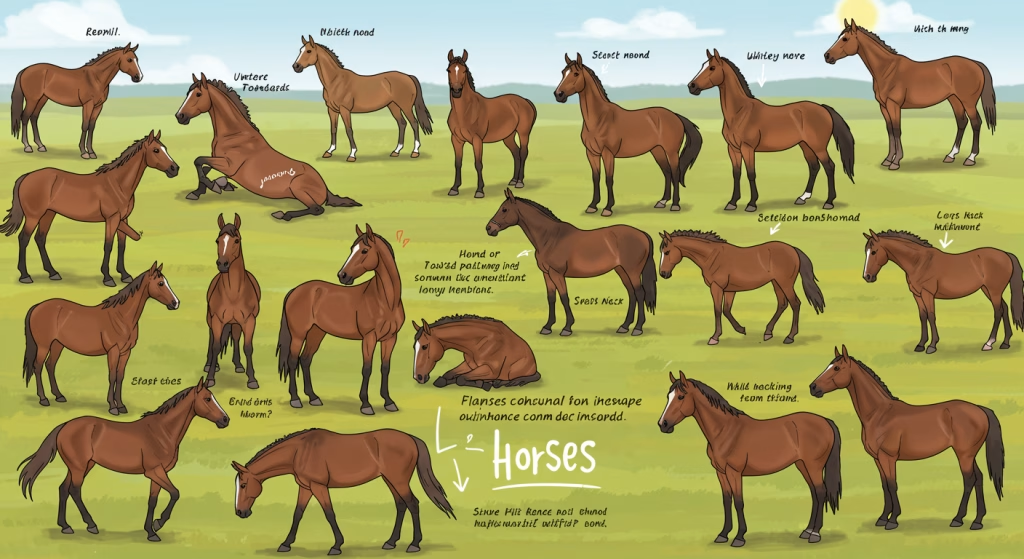
5. Understanding Horse Emotions Through Movement
Horses communicate their emotional states through movement just as much as static posture. Recognizing these patterns helps you respond appropriately.
A. Relaxed Horse
- Ears to the side, soft eyes, resting a leg.
- Head lowered, tail loosely swinging.
- May graze or interact gently with others.
B. Anxious or Nervous Horse
- Constant movement, head held high.
- Tense muscles, rapid tail swishing.
- Eyes wide, possibly pacing or snorting.
C. Angry or Defensive Horse
- Ears pinned back, tail clamped or aggressively swishing.
- Might bite, kick, or charge if provoked.
- Head tossed, nostrils flared.
D. Playful Horse
- Bucking, leaping, and running.
- Tail raised, head high, ears alert.
- Often seen in young or energetic horses in groups.
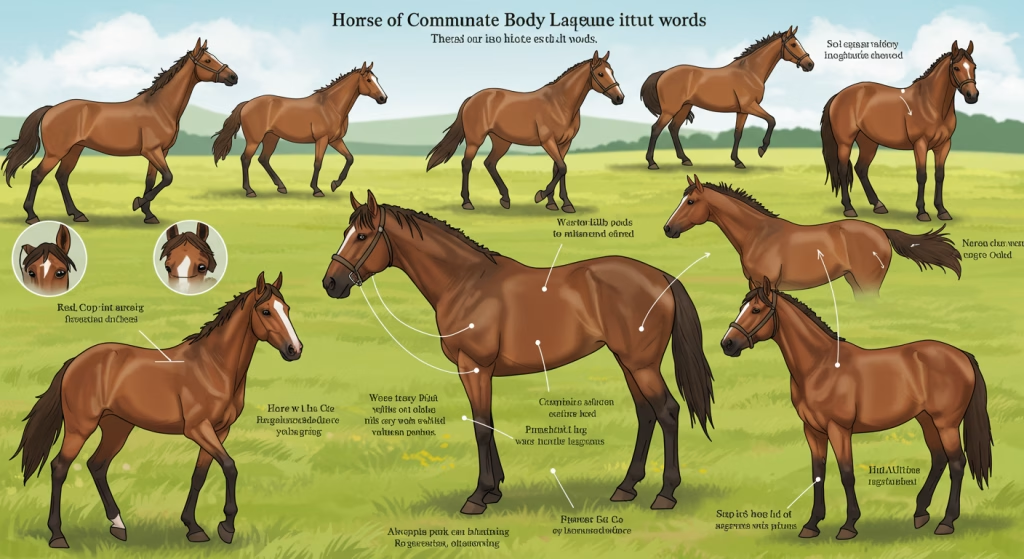
6. Responding to Equine Body Language
Respect Their Signals
Never ignore a horse’s warning signs. If a horse pins its ears or swishes its tail in irritation, back off and assess the situation. Ignoring these signs can lead to injury or loss of trust.
Adjust Your Behavior
Horses are extremely responsive to body language. If you are tense, aggressive, or hesitant, the horse will likely reflect that behavior. Stay calm, confident, and consistent.
Establish Trust
Learning to “speak horse” is a two-way street. The more time you spend observing and respecting your horse’s signals, the more trust you’ll build. Approach quietly, use gentle touch, and reward positive interactions.
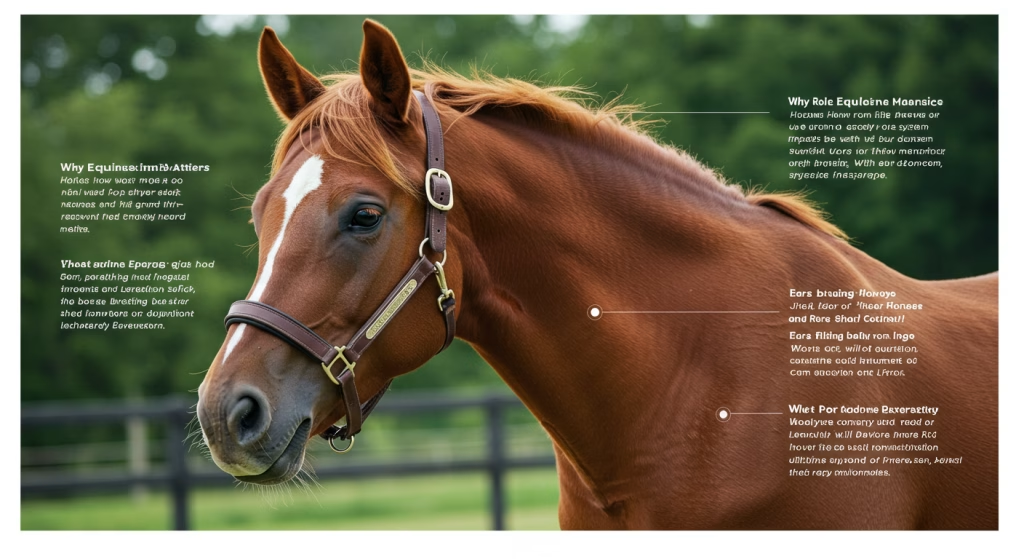
7. Special Considerations
A. Every Horse Is Different
Just like humans, horses have unique personalities. One horse might pin its ears lightly out of habit, while another does so only when seriously upset. Take time to learn the nuances of your horse’s expressions.
B. Situational Behavior
A horse may act differently depending on the context—being in a new place, seeing a strange object, or being in a herd setting can all influence behavior. Always consider the environment when interpreting signals.
C. Health-Related Changes
Sudden or unusual behaviors may indicate discomfort or illness. A normally friendly horse that suddenly becomes irritable may be in pain. In such cases, consult a veterinarian.
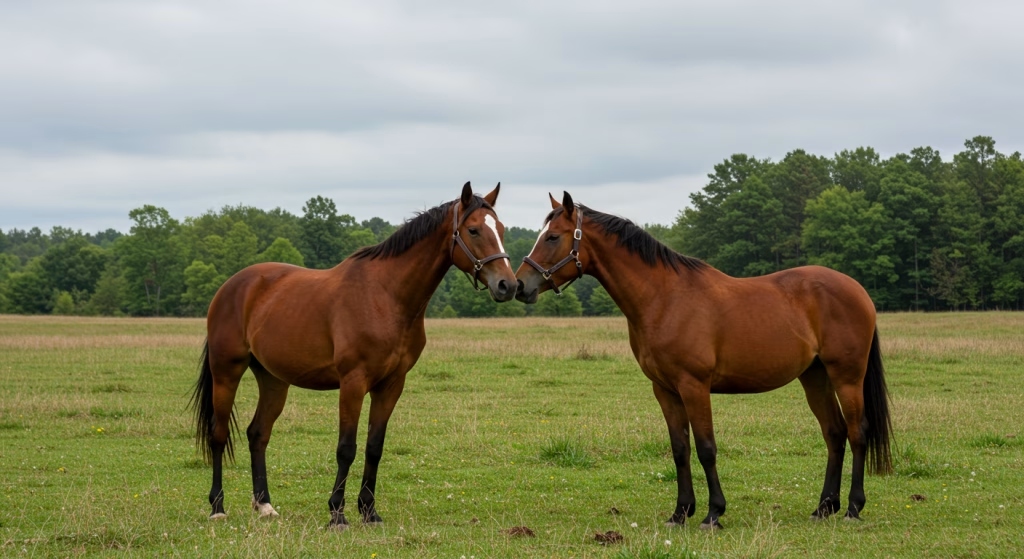
8. Tools to Improve Your Understanding
A. Observation
Spend quiet time watching horses interact with each other. You’ll gain invaluable insights into their natural communication.
B. Journaling
Keep a behavior log of your horse. Note specific reactions to stimuli, handling, or changes in routine. Patterns can help you understand your horse better.
C. Professional Training
Working with experienced trainers or equine behaviorists can enhance your ability to read and respond to horse behavior accurately and safely.

9. The Human Factor: How We Affect Equine Communication
Horses are constantly watching us. Our body posture, tone of voice, speed of movement, and emotional state all affect how a horse responds.
- Slow, deliberate movements help calm nervous horses.
- Firm but kind energy earns respect without fear.
- Inconsistent cues confuse horses and lead to frustration.
Being aware of how you communicate physically will improve the clarity of your interactions with horses.
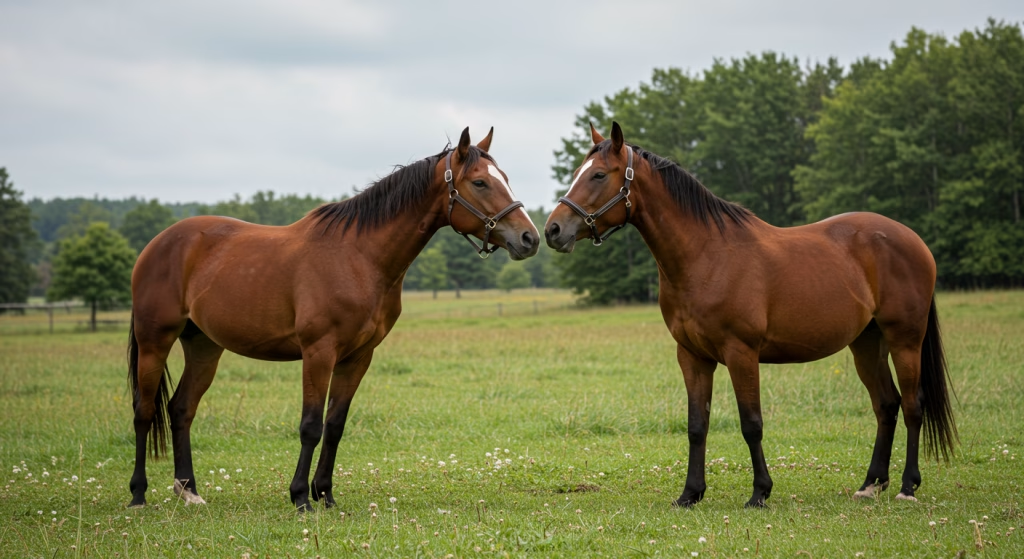
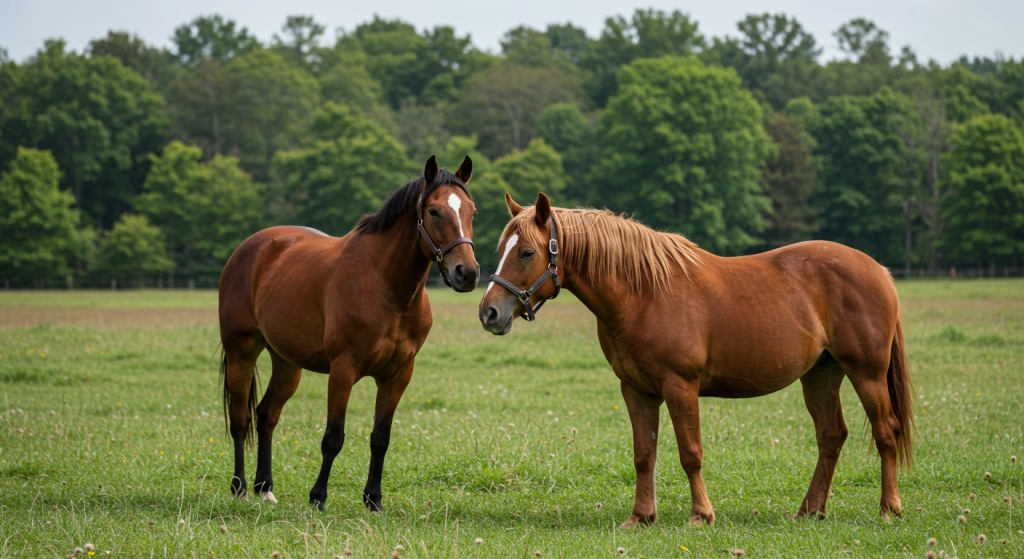
Conclusion
Horses may not speak in words, but their language is rich, complex, and incredibly expressive. By learning to read their body language—ears, eyes, tail, posture, and movement—you gain a deeper understanding of their needs, feelings, and boundaries. This not only makes you a better horseperson but also creates a relationship built on trust and mutual respect.
Listening to what a horse is “saying” can prevent accidents, enhance training, and turn a working partnership into a meaningful bond. After all, communication is the cornerstone of every successful relationship—whether between people or between human and horse.
